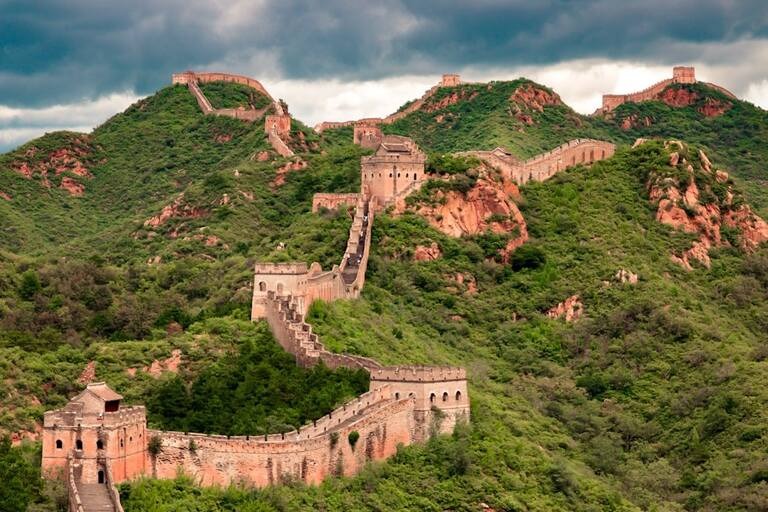
The Great Wall of China is a true marvel of ancient engineering, a testament to the ingenuity and determination of its builders. Spanning over 13,000 miles (21,000 kilometers) across treacherous terrain, including mountains, deserts, and grasslands, the wall’s construction posed immense challenges.
To overcome these obstacles, the builders employed a variety of innovative techniques. Granite, limestone, and other locally sourced materials were meticulously quarried and transported to the construction sites. Complex ramp systems and pulley mechanisms facilitated the movement of heavy materials, while advanced masonry techniques ensured the wall’s structural integrity.
One of the most remarkable engineering feats was the integration of the wall’s defensive structures with the natural landscape. Watchtowers and fortresses were strategically positioned on hilltops and mountain passes, providing unobstructed views and maximizing the wall’s defensive capabilities.
Beyond its defensive purpose, the Great Wall of China holds immense cultural significance, representing the resilience, determination, and ingenuity of the Chinese people. It is a powerful symbol of unity, reminding us of the collective effort and sacrifice required to construct such a monumental feat.
The wall’s cultural impact extends to literature, art, and folklore, inspiring countless works celebrating its grandeur and historical significance. Poets and writers have woven tales of the wall’s construction, the lives of its builders, and the battles fought along its length, capturing the essence of this iconic structure.
The Great Wall of China is an engineering marvel with a rich and fascinating history spanning over two millennia. This colossal fortification, stretching across the vast expanse of northern China, has witnessed the rise and fall of dynasties, the clash of civilizations, and the unwavering determination of a people to protect their homeland.
The history behind the Great Wall can be traced back to the 3rd century BC, during the reign of the first emperor of the Qin Dynasty, Qin Shi Huang. Driven by the desire to protect his empire from invasions by nomadic tribes from the north, Qin Shi Huang ordered the construction of a series of defensive walls and fortifications. This initial structure, however, was merely the foundation upon which subsequent dynasties would build and expand.
The Han Dynasty (206 BC–220 AD) continued the construction and reinforcement of the wall, extending it further westward and incorporating advanced defensive features such as watchtowers and signal fires. The Han period saw the wall’s transformation from a series of disconnected fortifications into a more cohesive and formidable defensive system.
The Sui Dynasty (581 – 618 AD) undertook significant repairs and renovations to the wall, strengthening its defences and improving communication along its length. However, it was the Ming Dynasty (1368–1644) that oversaw the most extensive and ambitious phase of construction, transforming the Great Wall into the awe-inspiring structure we know today.

-

How AsyncAwait Can Slow Down Your Nodejs App
-

Why Americans Are Avoiding Travel: The Real Reasons
-

Hiking India's most impregnable fortress: Ginger fort — a picture blog
-

The great wall of china
-

Testing Blog
-

I am a testing blog 2
-

I am a test blog 3333
-

200 new one after backend change
-

Test blog 44444444444
-

Profile Image testing blog
-

I am a new Blog 123st
-

Challenges faced by Women Entrepreneurs 40%


